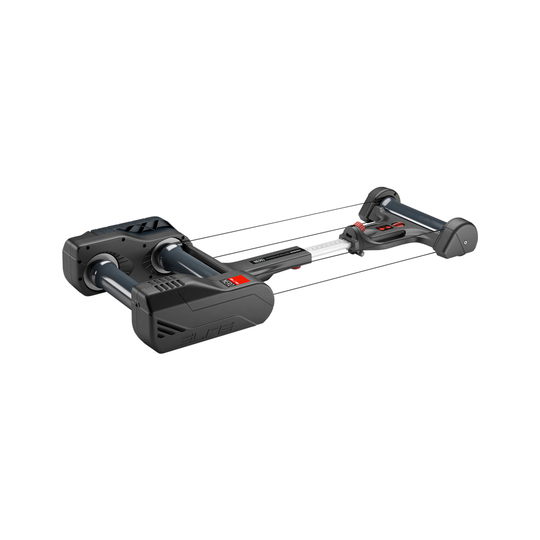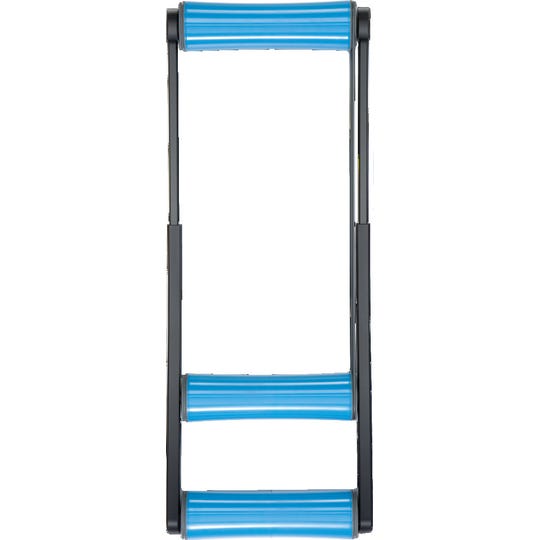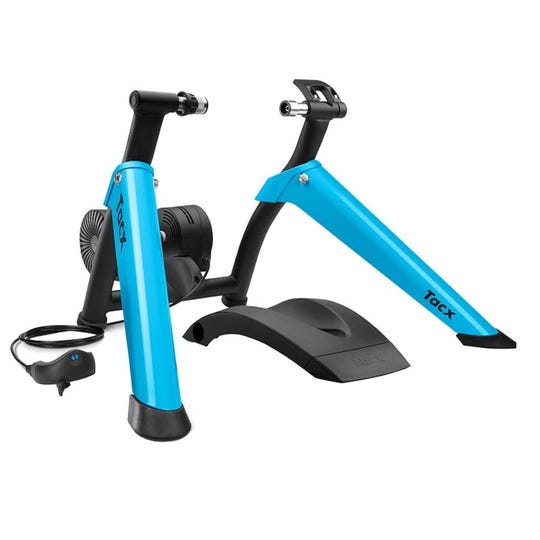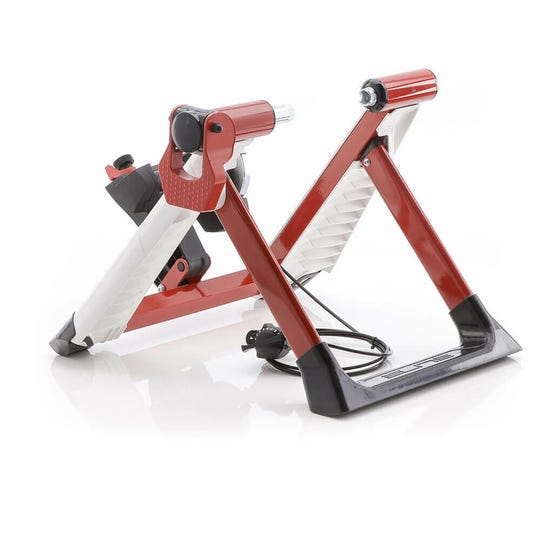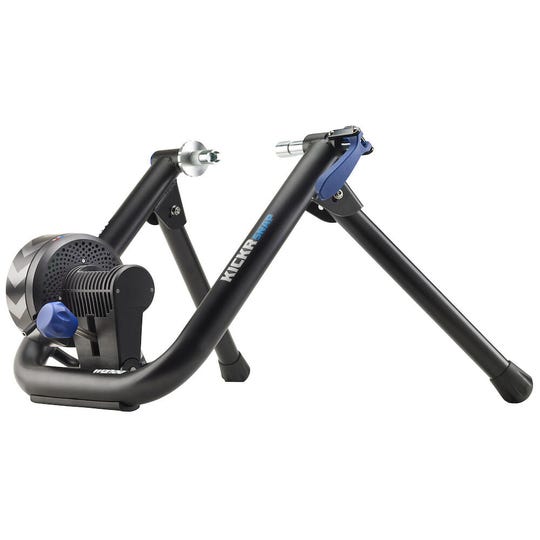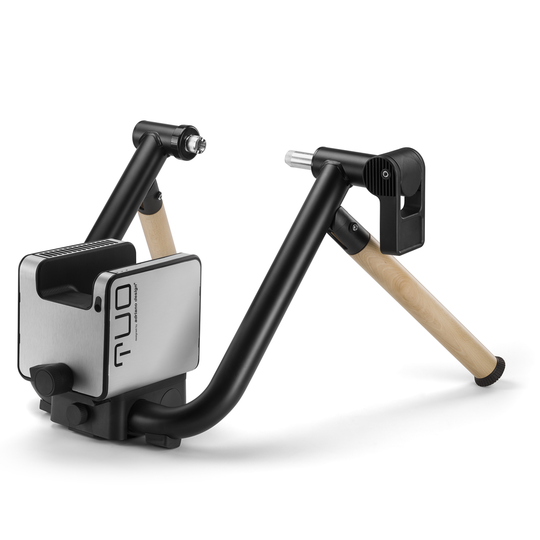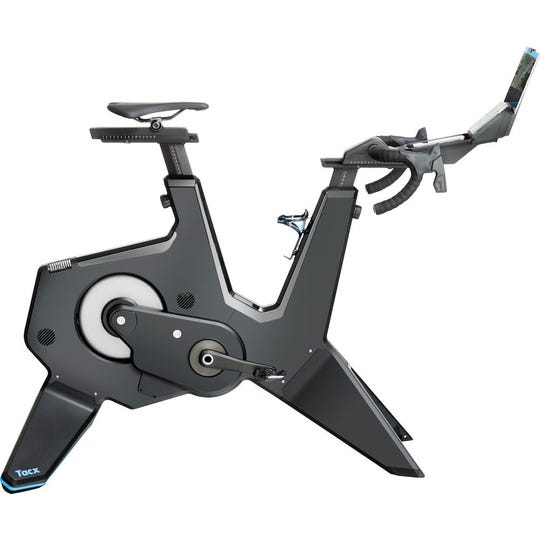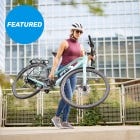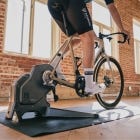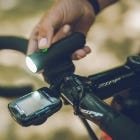When the time comes to choose a bike trainer, the possibilities may seem endless. However, the best way to find the right trainer is to define your objectives and to establish what features you need or want.
What is an indoor bike trainer?
An indoor bike trainer is a mechanical or electronic device that allows for bike training during long winter months, on your own bike.
How to choose the best bike trainer?
When the time comes to choose an indoor trainer, the possibilities may seem endless. However, the best way to find the right trainer is to define your training objectives and to establish what features you need or want. Here are the main factors to help you decide what’s best for you:
- Your level as a cyclist: the power you develop, your experience
- Your training objectives: humble, serious, advanced
- Desired features: Connectivity, interactivity, simplicity
- Resistance adjustment: manually, automatically
While more advanced cyclists will need trainers with more resistance in order to achieve more intense training, casual cyclists can choose more simple trainers that are more affordable and that will still let them stay in shape in the winter time.
With that being said, any cyclist can buy any trainer they want, however here are some guidelines to help you figure out what is best for you.
Classic rollers
This is the classic old-school rollers that you see track cyclists and racers at the local criterium use for their warmup. It’s a favorite amongst experienced riders who enjoy the natural pedaling feel of rollers. You also have to keep your balance, which makes it less redundant than regular trainers.
This means rollers will help you improve your core strength, as well as your pedaling technique and overall control of the bike. It’s a great tool to work on your technique and to warm up or cool down before races or events. And since most roller don’t have resistance adjustments, they’re not suited to hi intensity interval sessions. While they typically do not offer resistance changes, some models such as the Elite Nero are fully interactive and offer automated resistance adjustments, according to a third-party training application.
Rollers are light, easy to move around and easy to store. You don’t even need roller specific tires to use them. Be aware though that they require more concentration and skills than regular trainers.
Pros
- Affordable
- Light, easy to carry around
- Allows to improve technique
- Does not require electricity
Cons
- Less suited to intense interval workouts
- Harder to master
- More suited to experienced riders
Here are our roller recommendations :
Basic bike trainers
There’s a wide variety of basic bike trainers that allow riders of different caliber to train adequately. The main difference between a model and another is the maximum resistance it can provide. While the 700 watt maximum resistance of a Tacx Blue Matic will be more than enough for the casual rider, stronger riders will need more to allow for more intense workout intervals.
Basics trainers come in two main categories; magnetic trainers and fluid trainers. Magnetic trainers are the most popular and are perfect for interval training because you can adjust the trainer’s resistance, in addition to using your bicycle gears.
Fluid trainers are simpler in their design. Their resistance is not adjustable, it gets harder as you pedal at faster speeds. You must use your own gears to make it harder to pedal.
Although both these types of trainers aren’t particularly quiet, fluids are usually quieter. They might be the best option if you live in an apartment.
These trainers require the use of a specific rear tire sold separately. A regular tire will wear out rapidly because of the heat and friction generated by the trainer. You’ll find options from top brand such as Tacx and Continental. Beware that trainer tire cannot be used out on the road because they don’t have enough grip to corner safely.
Pros:
- A very vast price range
- Adapted to hi intensity training
- Easily movable
- Adjustable resistance (magnetic)
Cons:
- Use of a specific tire
- Can be loud
- Doesn’t calculate training data
Here are our recommendations for basic trainers :
Smart and Interactive trainers
This is the evolution of the basic bike trainer. These trainers offer connectivity, a virtual support and even automated resistance adjustments on the hi-end models. With the help of any training app, your phone or tablet can provide you with training workouts while collecting all your performance data. You can even use Zwift, an online platform where you can compete against other cyclists in real time.
These bicycle rainers are more fun and interactive, which means they’re perfect if you have a serious workout routine to follow, because let’s face it, pedaling in the pain cave all winter long can be quite the mental challenge.
They offer more advanced training features, such as video, virtual training and some can even calculate the power you develop.
Pros:
-
Connectivity and interactive training
-
Higher resistance
-
Hi-end quality and features
Cons:
-
More expensive
-
Can be loud
-
Must use a specific tire
-
Most must be plugged in to benefit all features
- Require constant calibration
Here are our recommendations for wheel-on interactive trainers :


Direct Drive trainers
The latest and greatest system available, where there is zero loss. Direct drive trainers offer the most realistic pedaling feel and a quiet ride, while still using your own bike.
The resistance changes are controlled by the application you use, meaning you have to actively use your gears to deal with the changing resistance, the same way you would outdoors. These bike trainers can emulate wind resistance, hills and even cobblestones. The fact that your chain is engaged on the trainer means that there is no loss due to tire slippage, which is good news if you want to do more advanced workouts like sprint intervals.
Simplicity is also a key advantage: These trainers are the most simple to use – simply pop out your back wheel, put the bike on the trainer and you’re good to go. You don’t need to use a specific tire like on regular trainers.
Direct drive trainers are perfectly suited to interval training and virtual interactions, such as Zwift.
Pros:
- Quick installation
- No specific tire required
- Quieter than most trainers
- Real pedaling feel
Cons:
- More expensive
- Need to be plugged to work at their full capacity
- You need to buy a cassette
Here are our recommendations for direct drive trainers :


Trainer bikes
For the absolute best indoor training experience, trainer bikes are the only choice. They can emulate grade changes by elevating/descending the bike, have integrated and programmable shifting, adjust resistance and even, in some cases, emulate road texture and wind. The idea here is to have an entirely separate training device, leaving your own bike untouched and ready for outdoor riding.
Most models have a wide fit window to reach the most riders as possible. They also accept parts from third party manufacturers such as pedals, handlebars and stems, for a close reproduction of your bike’s ride feel.
Pros:
- Most realistic ride feel availabe
- Interactive connectivity
- Emulation of road feel, grade changes and wind
- Wide fit window
Cons:
- Quite expensive compared to trainers with similar performance
- Take up a lot of space compared to conventional trainers
Here are our recommendations for indoor trainer bikes :
Must-have accessories
Training tire
On trainers where the back wheel is fixed, you must use a trainer specific tire, because the heat and friction generated by the trainer will ruin any regular road tire. That’s why top brands like Tacx and Continental offer trainer specific tire. Their lifespan is pretty big, usually ranging from 2 to 4 seasons. These tires cannot be used outside because they don’t offer any grip and you would fall in any fast corner.
Leveling block
A leveling block for the front wheel adds stability to your bike when you’re training. On trainers where the rear wheel is fixed, you must use a leveling block in order to keep your bike leveled. Without it, your saddle will be tipped and won’t offer you the proper support to ride comfortably.
Some models have height adjustments to allow you to train in a climbing position.
ANT+ Antenna
An ANT+ Antenna such as the Tacx antenna will allow you to connect your trainer to your computer for interactive training. Although there are some exceptions, most Windows PCs will require an ANT+ connection, whereas Apple devices such as a Mac, iPhone, iPad or Apple TV can simply use bluetooth connectivity.
Training mat
Depending on where you choose to put you trainer, you might want to put a training mat underneath it to minimize vibration, noise and protect your floor from sweat and bike grime. A mat will also prevent your trainer from moving during intense sessions.
Tablet holder
If you want to use a smart trainer, a tablet holder is quite useful to ensure that you control your resistance and keep track of your intervals. With all the new training apps out there, more and more people start to use their tablets to train.
Still have questions about indoor trainers? Check out our other blog posts on the subject or write to us, our experts will help you fin the best indoor trainer for you. With Primeau Vélo, you can order your trainer online and and get fast and free shipping on any order over 149$ all across Canada or come check out our selection in one of our stores across Québec.

